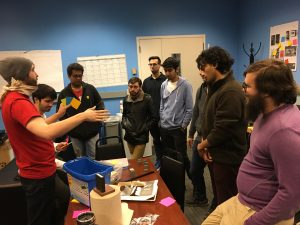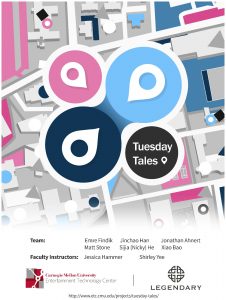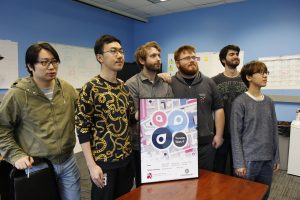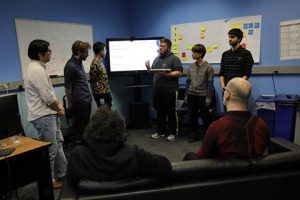This week the Tuesday Tales team worked to narrow down the ideas from our brainstorm into a few ideas we will pitch to Legendary. The 3 ideas that we had rise to the top were match based gameplay, a merchant game, and a Tamagotchi-esque game.
The match based idea is taking a location based experience but only running it with a small group in a fixed area for a certain amount of time. This could mean treasures being stashed around the Carnegie Mellon campus and 10 friends competing to find the most in 30 minutes. It could also mean 2 teams competing against each other in order to control markers and discover the other team’s base. Nicky has been leading the exploration and playtesting of this idea.
The merchant game is a location based experience based around buying and selling at merchants. For example, I could go the store at Cohon university center and it might have a lot of food or wheat that it is willing to sell for cheap. I could then go to another store, for example the ETC, which doesn’t have much food and thus is willing to buy it for a lot and make a profit. Over time, I would be able to automate this process and be able to invest in stores so that I don’t have to be actively moving between stores to participate. Jonathan has been leading the exploration of this idea.
The Tamagotchi game is a location based experience where players would be going to markers in order to care for monsters that they could raise or collect. Right now, we’re exploring a couple didn’t iterations of this core concept. In one, the player is given one monster and has to go between markers in order to help meet it needs, such as hunger or grooming. In the second idea, the monsters reside at the markers and players grow relationships with them by visiting the markers and meeting the monsters needs. In our last idea, the player is going around to the different markers in order to gather materials to make the monster, such as bones that together make a dinosaur. Emre has been leading the exploration of this idea.
We also started running physical playtests on our ideas. The first one to be playtested was the merchant game. We had 6 ETC students from outside the project running around the building trying to trade sticky notes between Emre, Jonathan, and Matt. The goal was to have the most amount of money at the end of 15 minutes. It gave us a lot of good feedback and showed the potential of the idea.

Jin has been working with each of the ideas in order to help visualize them. This is aiding us in both our internal communication of the ideas and our pitches to Legendary. For example, Jin has been working with Jonathan to make concept art to convey the idea that you are leading an arabian caravan running from town to town seeking your fortune.
Xiao has been hard at work creating the promotional material for our project. This includes the team poster and half sheets. These will help us convey the location based nature of our project and describe our project and it’s goals to visitors and faculty.





